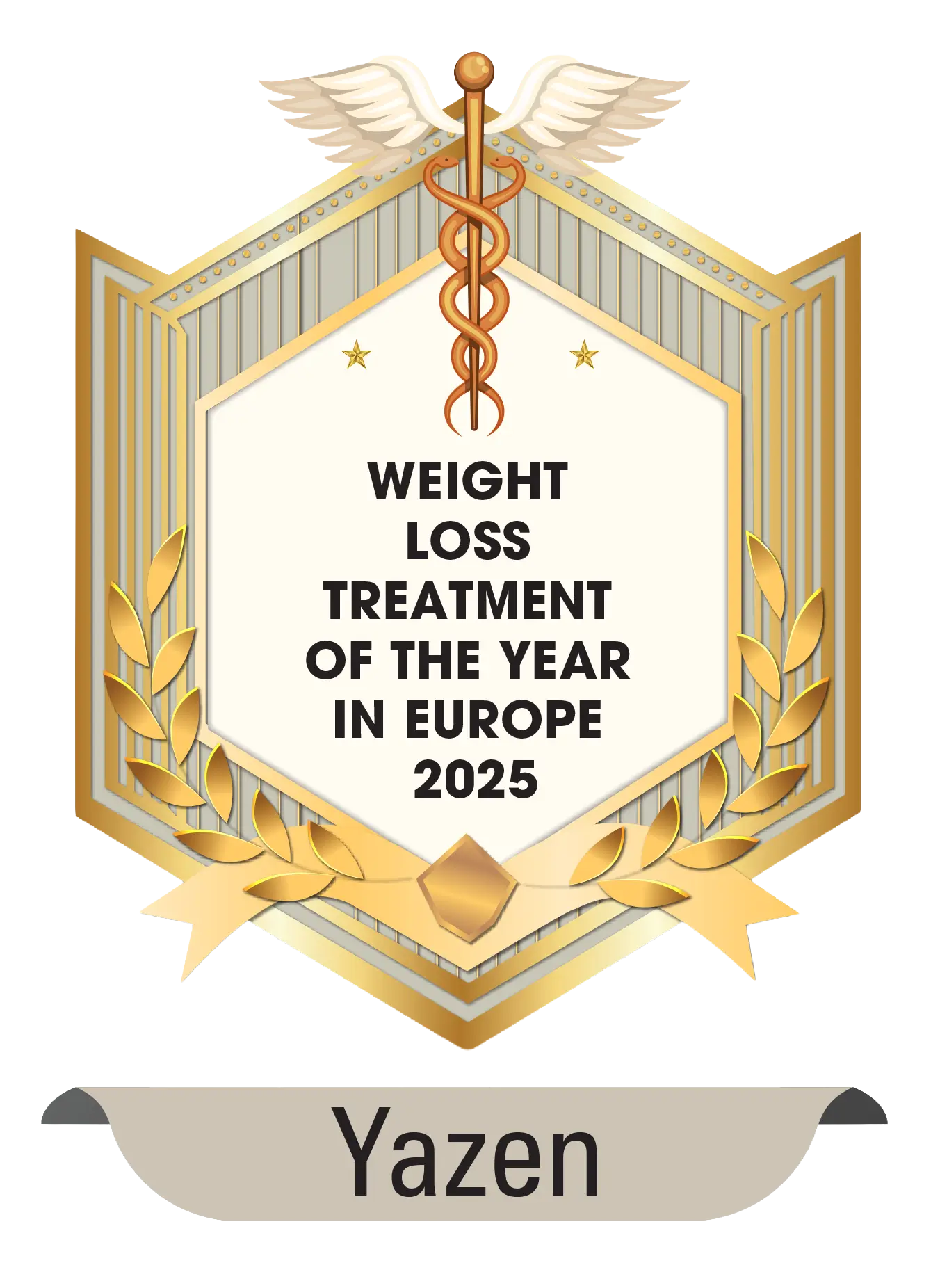Testosterone, Obesity and Men's Health: Role, Health Impact, and Treatment Options
Obesity significantly impacts men’s hormonal health — particularly testosterone — increasing risks of fatigue, weight gain, and chronic disease; understanding this connection is key to effective treatment and long-term wellbeing.

Testosterone, Obesity and Men's Health: Role, Health Impact, and Treatment Options
Obesity and overweight have become major health challenges globally, impacting various aspects of men’s health, including hormonal balance. One significant concern is the link between obesity and low testosterone levels (hypogonadism), affecting not only physical health but also mental and emotional wellbeing [1,2]. Hypogonadism is increasingly recognised as a significant health concern, especially among men with overweight or obesity. The prevalence is estimated to be up to 40% in men with obesity, highlighting the importance of targeted evaluation in this population [3,4]. Adult men are particularly affected by changes in testosterone level due to obesity, making regular assessment of testosterone level crucial for this group [3,5].
Testosterone, the primary male sex hormone, often seen as just a muscle-building, libido-enhancing hormone, plays a vital role in maintaining muscle mass, bone density, red blood cell production, mood, energy, sexual function, and overall quality of life. The levels of testosterone are important for maintaining these aspects of health, and fluctuations can significantly impact wellbeing [4-6].
Understanding how lifestyle and body composition influence testosterone, causes, risks, and treatment options, is key to improving long-term outcomes. This article will explore low testosterone, also known as male hypogonadism, and its relationship with obesity, offering insights for men seeking treatment options.
Introduction to Testosterone
Testosterone is the primary male sex hormone, crucial for the development and maintenance of male characteristics. In adult males, testosterone is produced mainly in the testicles. This hormone is responsible for the growth of facial and body hair, building and maintaining muscle mass, and supporting a deeper voice [4]. Beyond these visible traits, testosterone plays a vital role in sperm production and overall reproductive health [5]. As men age, testosterone levels decline gradually, but abnormally low levels are most often due to underlying disease [7]. Obesity in particular is associated with lower testosterone [3]. Recognising the importance of healthy testosterone levels is essential for maintaining vitality, strength, and well-being throughout adulthood [6].
Understanding Testosterone Levels
Testosterone levels in men are not static — they fluctuate throughout the day, typically peaking in the morning [5]. While normal testosterone levels can vary from person to person, the European Association of Urology (EAU) considers levels above 12 nmol/L as normal. Levels between 8–12 nmol/L are often referred to as a "grey zone", where symptoms of testosterone deficiency may occur, while values consistently below 8 nmol/L usually indicate true deficiency (hypogonadism) and often justify treatment if symptoms are present [4,8]. Several factors can influence these levels, including age, overall health, and especially body composition [3,7] . Excess body fat, particularly in the abdominal area, can lower testosterone levels because fat cells convert testosterone into estrogen, further reducing the amount of available testosterone [9,10]. Understanding your testosterone levels through a blood test is a key step in diagnosing testosterone deficiency and addressing potential health concerns related to low testosterone [8].
Role of Testosterone in Men’s Health
Testosterone plays a central role in many aspects of men’s health. It is essential for maintaining sexual function, supporting bone density, and building muscle mass. [4,5] When testosterone levels drop, men may experience weight gain, reduced muscle strength, and a decline in libido or sexual performance [3,11]. Low testosterone can also disrupt the way the body stores and uses fat, leading to increased body fat and a higher risk of chronic conditions such as heart disease and type 2 diabetes [1,3]. The relationship between testosterone and body fat is complex: excess body fat can lower testosterone levels, and low testosterone can make it harder to lose weight, creating a cycle that increases the risk of health problems [2,3]. Maintaining healthy testosterone levels is therefore crucial for overall well-being, physical performance, and long-term health [6].
Body Mass Index and Testosterone
Body Mass Index (BMI) is a common tool used to assess whether a person is at a healthy weight for their height [12]. Research shows that men with higher BMIs, especially those with excess body fat, tend to have lower testosterone levels [1,3]. This can increase the risk of developing metabolic syndrome, cardiovascular disease, and even prostate cancer [13,4]. Excess body fat, particularly around the waist, is linked to insulin resistance, high blood pressure, and unhealthy cholesterol levels, all of which can negatively affect testosterone production and overall health [10,14]. Maintaining a healthy weight and body composition is not only important for general health but also for supporting optimal testosterone levels and reducing the risk of serious health conditions [6,15].
Weight and Testosterone Deficiency - a Vicious Cycle
Testosterone deficiency can arise from a variety of factors, ranging from natural aging and genetic conditions to lifestyle-related influences such as overweight and obesity, stress, chronic illness, or comorbidities such as smoking, alcohol use, physical inactivity and diabetes [16].
Classical hypogonadism (“organic” hypogonadism) means that the body cannot produce enough testosterone because of a clear medical problem — for example damage to the testicles after chemotherapy, genetic conditions such as Klinefelter syndrome, or diseases affecting the pituitary gland in the brain [4-5]. In these cases, the testosterone deficiency is usually permanent, and treatment with testosterone replacement therapy (TRT) is required. This form affects an estimated 6–12% of middle-aged and older men, and is more common in those with chronic illness [1,3].
By contrast, from being a direct problem with the testicles themselves, as in classical hypogonadism, 20–50% of men with overweight or obesity exhibit another kind of low testosterone levels, referred to as Male Obesity-related Secondary Hypogonadism (MOSH), sometimes described as “pseudo-hypogonadism of obesity”, which stems from the indirect effects of obesity. [2,17]
The main cause of low testosterone levels in overweight men is mainly because fat tissue expresses aromatase, an enzyme that converts testosterone into estrogens. The key driver is increased aromatisation in adipose tissue, leading to higher estrogen and suppression of testosterone synthesis [2-3].
This combination of increased estrogen production, impaired testosterone synthesis, and chronic inflammation in obesity, creates a hormonal imbalance that can manifest in a vicious cycle: low testosterone promotes visceral fat accumulation — the dangerous fat around abdominal organs — making it harder to lose weight, and worsens metabolic dysfunction, while obesity itself further suppresses testosterone [1-3,16-17], reinforcing the vicious cycle, leading to worsening health outcomes].
Importantly, unlike organic hypogonadism, MOSH can often be corrected through weight reduction and improved metabolic health, without the need for lifelong medical treatment [3,8]. As weight is lost and metabolic health improves, testosterone levels rise, helping to restore hormonal balance.
Common Symptoms of Low Testosterone (Hypogonadism)
Low testosterone or hypogonadism presents with a range of symptoms that can significantly impact a man’s daily life, and these symptoms are commonly associated with low blood testosterone levels [9-10]:
- Mood disturbances: Increased feelings of sadness, depression, anxiety, and irritability. These psychological effects can stem from testosterone’s role in regulating neurotransmitters such as serotonin and dopamine, which affect mood and emotional stability. Changes in blood levels of testosterone can influence these mood and cognitive effects.
- Fatigue: Persistent tiredness, lack of energy, and decreased stamina. Low testosterone levels can impair mitochondrial function, reducing energy production at the cellular level. It also affects erythropoiesis, the production of red blood cells, leading to anemia and fatigue. Less testosterone in the blood contributes directly to these symptoms.
- Cognitive symptoms such as impaired concentration, memory decline, and reduced executive function may also occur, particularly in older men.
- Reduced motivation: Difficulty in finding enthusiasm or drive, leading to decreased productivity and engagement in daily activities.
- Gynecomastia: Development or enlargement of breast tissue, which can be a distressing and embarrassing symptom due to the imbalance between testosterone and estrogen.
- Loss of muscle mass and strength: Decrease in physical performance and endurance, making it harder to engage in exercise and physical activities. Less testosterone can result in reduced muscle mass and strength.
- Decreased bone density: Increased risk of fractures and osteoporosis, which can lead to chronic pain and mobility issues, particularly in older men.
- Sexual dysfunction: Reduced libido, erectile dysfunction (ED), and impotence, affecting intimacy and sexual satisfaction [11].
Societal Stigma, Access to Care and Seeking Help
Many men may hesitate to seek medical help for obesity or low testosterone, and they are underrepresented in weight management programs and clinical studies [12-13]. Stigma around discussing sexual or weight-related health further prevents many from accessing appropriate care [8]. Stigma can also prevent men from seeking help for underlying medical conditions related to low testosterone. Cultural and traditional expectations of masculinity can discourage men from expressing vulnerability, acknowledging symptoms such as fatigue, low mood, or reduced sexual function, in turn, discouraging them from seeking assistance, leading to delayed diagnosis and treatment [12]. In addition, the healthcare system’s focus on female health issues can lead to a lack of awareness and understanding of men’s health concerns [27]. Recognising male hypogonadism as a legitimate medical condition is essential to reduce stigma, and understanding that low testosterone is a risk factor for several serious health problems, as well as understanding treatment options, is crucial for improving care and overall health, well-being.
Health Risks Associated with Low Testosterone (Hypogonadism)
Low testosterone, or hypogonadism, is not just about feeling tired or experiencing sexual dysfunction; it also carries serious health risks [2,9-10]:
- Metabolic Syndrome: Low testosterone levels are closely linked to insulin resistance, leading to a cluster of conditions called metabolic syndrome, including abdominal obesity with increased waist circumference, high blood pressure, high triglycerides, low HDL cholesterol, and insulin resistance, all amplifying cardiovascular risk, with increased risk of type 2 diabetes [2-3,11].
- Cardiovascular Issues: Low testosterone levels can impair endothelial function, increase arterial stiffness, and promote the formation of blood clots, thereby increasing the risk of cardiovascular events linked to heart disease, high blood pressure, and dyslipidemia [28].
- Increased Cancer Risk: Chronic inflammation and hormonal imbalances can promote cancer development. Visceral fat accumulation and hypogonadism, can be associated with an increased risk of colorectal, liver, and aggressive prostate cancers [13]. While testosterone does not increase the risk of developing prostate cancer, it may influence the progression of existing prostate cancer and affect the prostate gland, especially after testosterone deprivation therapy.
- Sleep Problems: Disrupted sleep patterns and increased risk of sleep apnea, which can further exacerbate fatigue and cardiovascular risks. A recent meta-analysis confirmed that low testosterone is associated with a higher prevalence of sleep apnea [13].
- Chronic inflammation: CRP is a strong predictor of low testosterone, showing inflammation may be as important as adiposity itself [4-5].
- Sarcopenia and frailty: Low testosterone is also associated with sarcopenia and frailty, increasing fall and fracture risk in aging men [5].
- Male pattern baldness: Male pattern baldness can be a visible sign of hormonal imbalance related to testosterone, reflecting elevated androgen activity or disruptions affecting hair growth patterns [8].
Diagnosing Low Testosterone: The ADAM Test and Comprehensive Assessment
Diagnosing male hypogonadism involves a comprehensive approach, starting with recognising the common symptoms and considering relevant health history [11]. It is critical to distinguish classical hypogonadism – organic, irreversible, often requiring lifelong treatment – from pseudo-hypogonadism of obesity, Male Obesity-related Secondary Hypogonadism (MOSH), which is reversible [3].
A key step is measuring testosterone levels through blood tests, preferably performed in the morning when levels are typically highest due to the diurnal variation in testosterone secretion. These blood tests help determine the amount of testosterone produced by the body, providing insight into whether the body’s biosynthesis and regulation of testosterone are functioning properly.
The blood tests sometimes include:
- Total Testosterone (TT/Total T): Measures the total amount of testosterone in the blood.
- Sex Hormone-Binding Globulin (SHBG): A protein that binds to testosterone and affects its availability. Free testosterone should be assessed when SHBG levels are altered, as is common in obesity and diabetes, to avoid misclassification [16].
- Free Testosterone (fT/Free T): Measures the amount of testosterone that is not bound to proteins and is readily available for use by the body.
- Luteinizing Hormone (LH) and Follicle-Stimulating Hormone (FSH): Hormones that regulate testosterone production in the testes.
- Prolactin (PRL): A hormone that can affect testosterone levels if elevated.
- Estradiol (E2): Measures the amount of estrogen present.
- Albumin (Alb): Measure for correct level if bioactive testosterone is measured.
It’s important to take into account that normal testosterone can decline with age, why it is important to compare with appropriate reference intervals [25]. At Yazen, we offer the ADAM (Androgen Deficiency in Aging Males) questionnaire as an initial screening tool to help quickly identify potential testosterone deficiency [27]. This simple questionnaire assesses common symptoms associated with low testosterone. If the ADAM test suggests a deficiency, we conduct further testing to confirm the diagnosis.
Managing and Treating Low Testosterone: A Comprehensive Approach
Managing low testosterone, also known as hypogonadism, involves a multi-faceted approach tailored to individual needs [15]. Options include:
- Lifestyle Modifications: Implementing a balanced diet, regular exercise, adequate sleep, and stress management techniques.[18] A diet rich in whole foods, lean proteins, and healthy fats can support optimal hormone levels. Regular physical activity, particularly resistance training, can help increase muscle mass and improve testosterone production [32].
- Weight Loss: Losing weight, especially reducing visceral fat, can improve testosterone levels. Strategies such as caloric restriction, portion control, mindful eating, and structured weight loss programs can aid in weight management. Long-term weight loss also normalizes sex hormone profiles [19-20]. Treating obesity is a key strategy for restoring hormonal balance.
- Targeted Weight Management with Pharmacological interventions: New medications such as GLP-1 agonists promote weight loss and improve metabolic health, with positive effects on testosterone [3]. These medications, however, can cause loss of muscle mass which can be counteracted by improving testosterone levels [15].
- Anti-inflammatory strategies: because inflammation is such a strong contributor, management should also target reducing systemic inflammation [6-7].
- Addressing lifestyle and comorbidities: stopping smoking, moderating alcohol intake, increasing activity, and managing chronic conditions support recovery [7,15].
- Testosterone Replacement Therapy (TRT): TRT has a role in carefully selected patients with confirmed hypogonadism, but is not a substitute for addressing obesity and metabolic dysfunction. Weight loss normally provides improvements comparable or greater than TRT [2-3,19-20], but TRT may be considered in MOSH if symptoms persist after lifestyle and weight interventions [3]. Testosterone treatment may be considered for men with persistent symptoms, and it can improve sexual function in men with low testosterone. It is important to distinguish medically supervised testosterone treatment from the misuse of anabolic steroids, which can have serious health risks.
Testosterone Replacement Therapy (TRT): Balancing Benefits and Risks
When appropriately indicated, Testosterone Replacement Therapy (TRT) can improve muscle mass and strength, fat, body shape, sex drive, erections, and sexual satisfaction, as well as mood, energy, vitality, bone strength, and overall quality of life [11-13,21-22]. However, when considering testosterone replacement therapy (TRT), it’s important to weigh the potential benefits against the risks. These risks can include prostate enlargement (bigger prostate, which may cause urination problems), blood clots in the veins or lungs, acne, sleep apnea, erythrocytosis (too many red blood cells), testicular atrophy (shrinkage of the testicles) and infertility [10,13,16]. Excess testosterone or too much testosterone, whether from overuse of therapy or other causes, can lead to adverse effects such as acne, infertility, and cardiovascular issues. Particular caution is required in men with untreated severe obstructive sleep apnea, uncontrolled heart failure, or those desiring to become pregnant [16]. TRT is available in various forms, including gels, injections, and patches [17,33]. The decision to initiate TRT should be made by shared decision-making with a healthcare professional and should be tailored to each individual’s situation and goals [23]. Regular monitoring is necessary during TRT to ensure its effectiveness and safety, including blood tests to check testosterone levels, red blood cell count, and prostate-specific antigen (PSA) [35].
A Holistic Approach to Male Wellness
Testosterone plays a crucial role in men’s health and overall vitality. Understanding the links between lifestyle factors like obesity and hormonal balance is essential for empowering men to take charge of their well-being. Maintaining healthy levels of male sex hormones is vital for overall well-being, as these hormones influence many aspects of health.
Fortunately, MOSH, low testosterone levels in men with overweight or obesity, is often reversible, and weight loss provides a powerful way to improve testosterone levels and overall health [9]. A variety of strategies can aid in weight management, ultimately promoting a healthier hormonal profile. Precision medicine approaches may allow individualised treatments, integrating genetic, metabolic, and hormonal profiling [3].
At Yazen, we understand the complex relationship between obesity and low testosterone (hypogonadism) and offer a comprehensive approach to men’s health, addressing the underlying issues and providing integrated treatment. We see the whole picture, offering a comprehensive treatment program combining pharmacological interventions with lifestyle and TRT when appropriate and necessary, to deliver individualised, evidence-based care. Our personalised plans include thorough evaluation, including the ADAM test and hormone level assessments, to accurately diagnose testosterone deficiency. By combining medical interventions, lifestyle modifications, and ongoing long-term support of our integrity-sensitive, easily accessible app, Yazen empowers men to reclaim their health and enhance their quality of life. In our integrity sensitive, easy accessible app, a whole team of obesity experts is helping men to maintain optimal health 24/7.
If you are concerned about potential testosterone deficiency, consult with a healthcare provider.

October 9, 2025
November 28, 2025
Start your weight loss journey with Yazen today
Everything you need to do is to create an account and answer some questions about your health
.svg)
.svg)




.svg)








